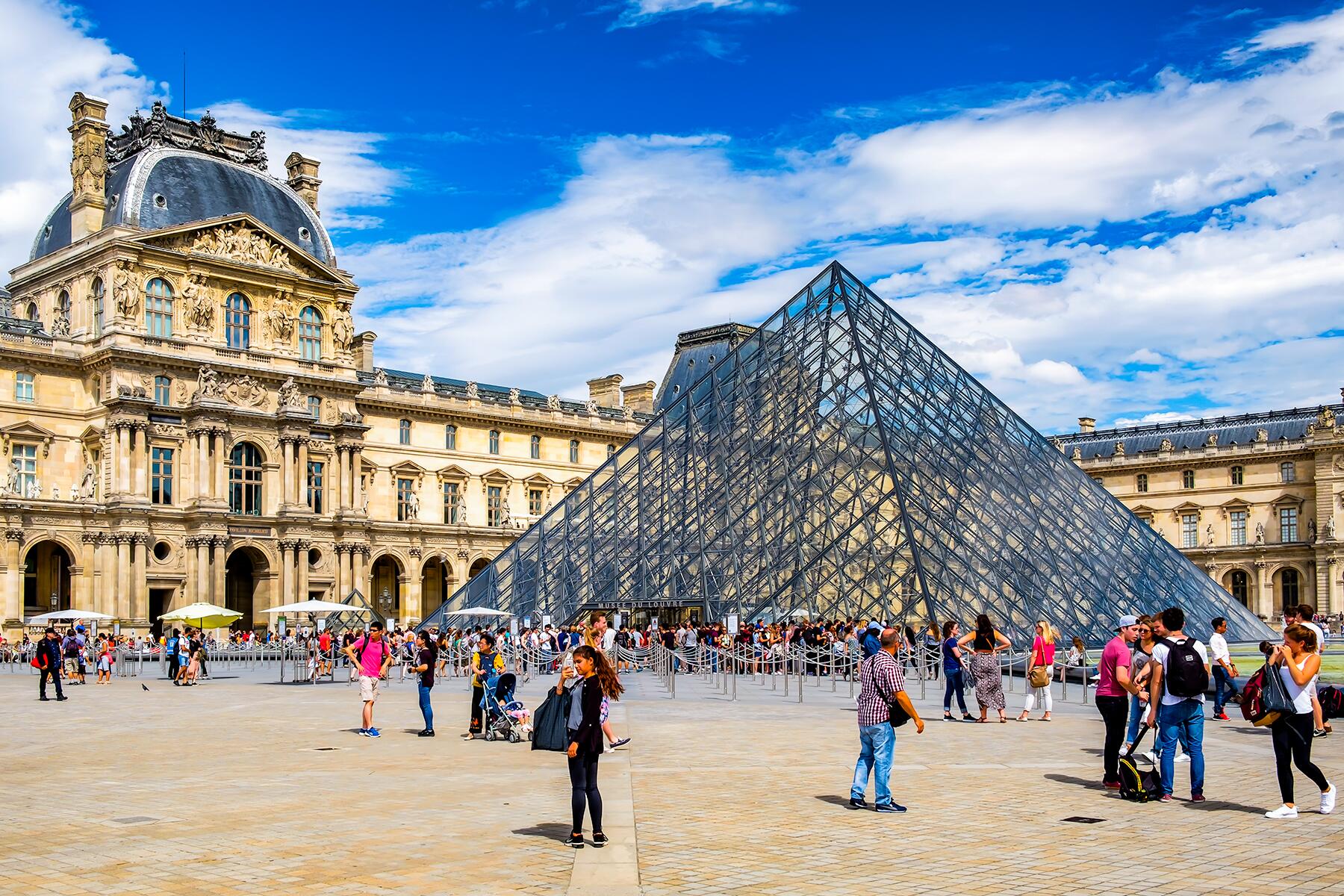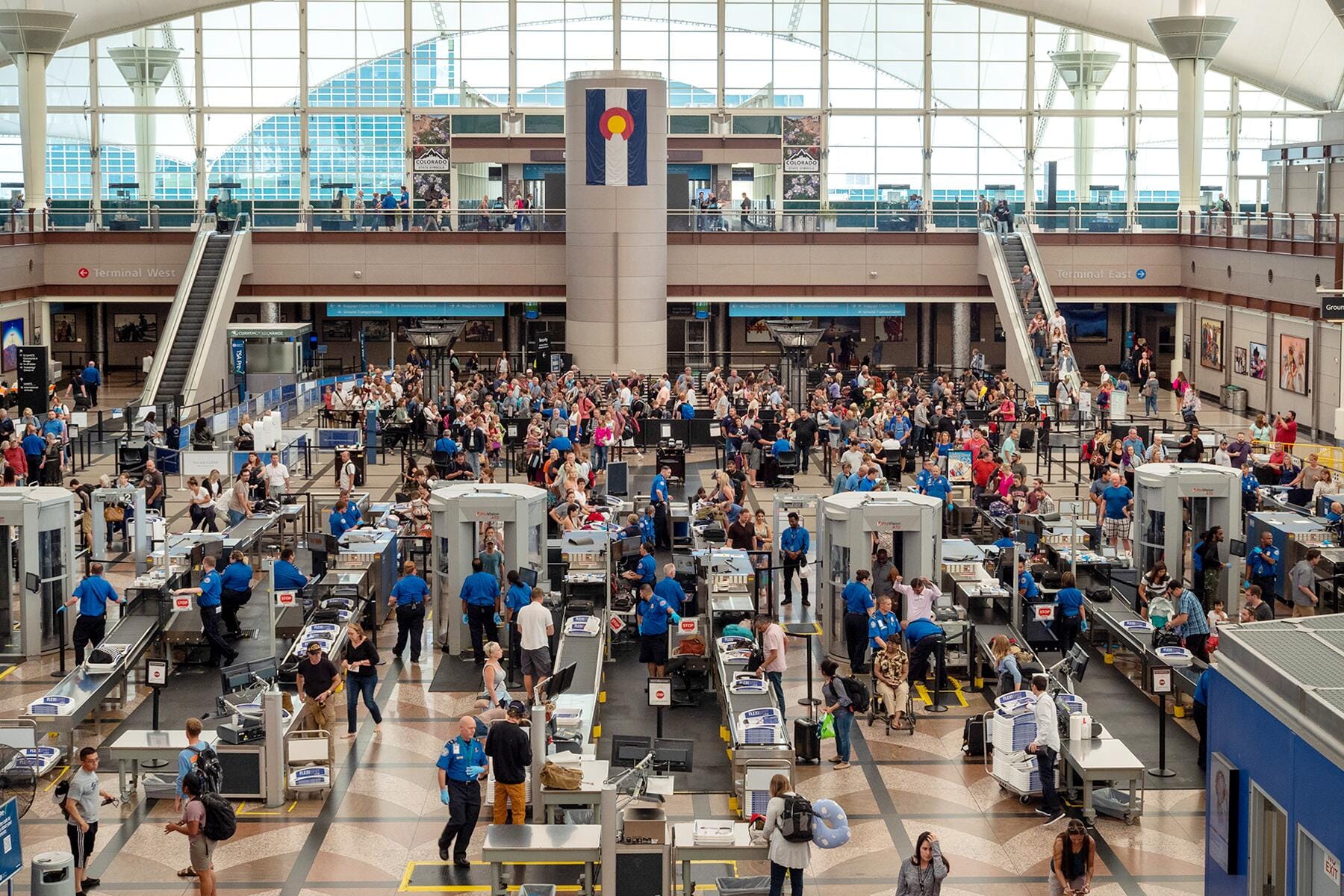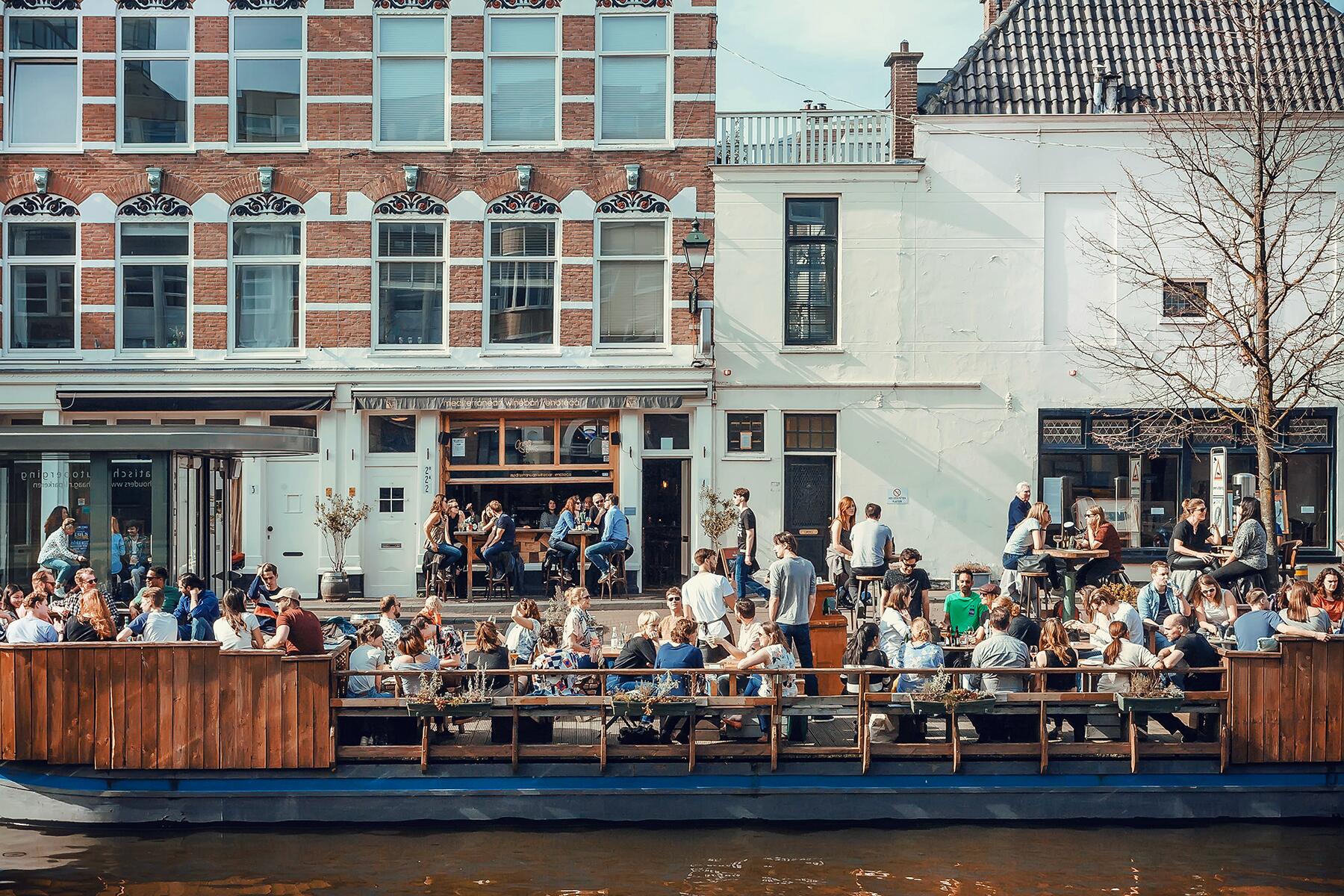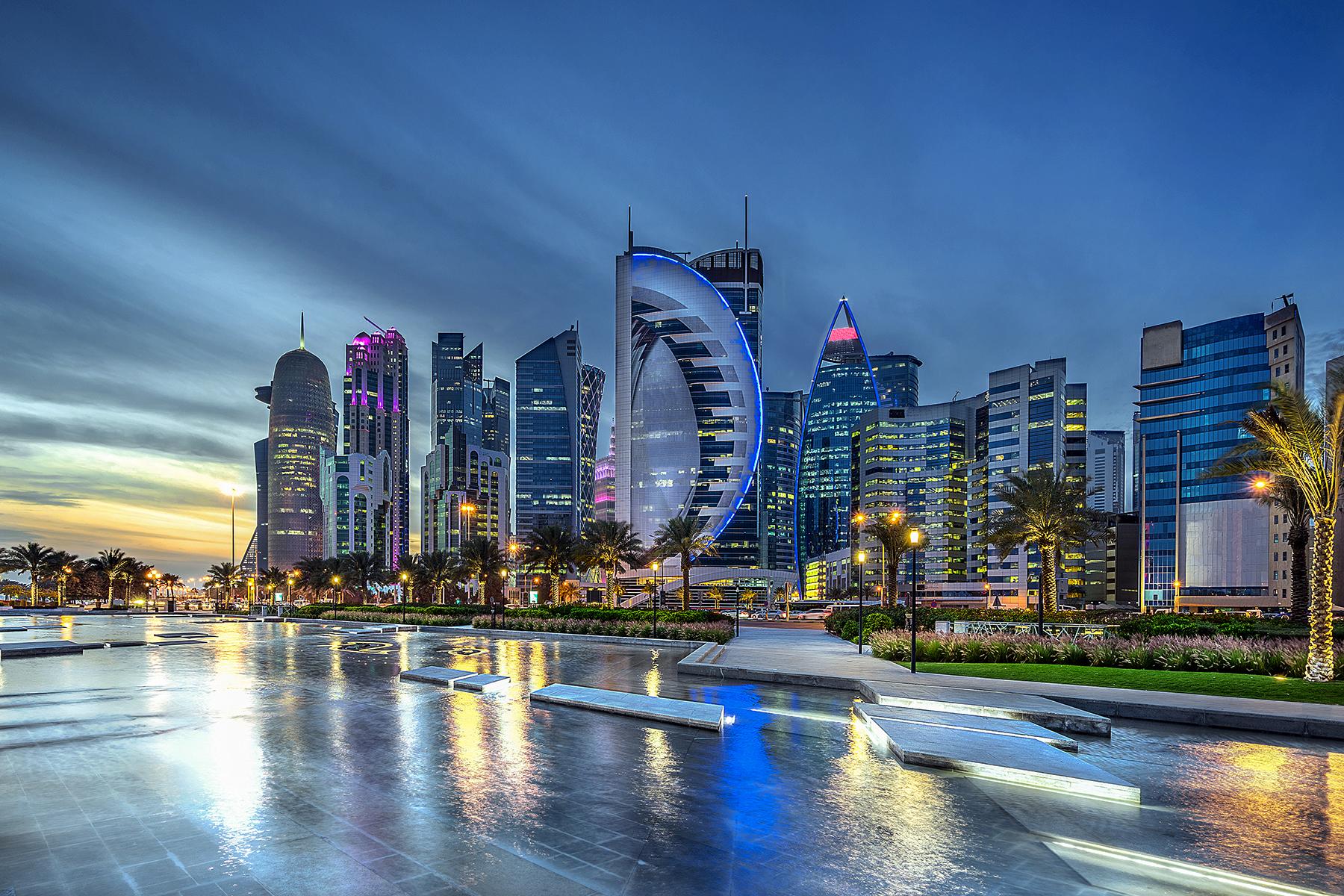- ⁄
- Travel News
- ⁄
- News •
- Travel Tips •
- Trip Ideas
Between the unveiling of an impressive Jean Nouvel-designed museum and the ever-growing list of luxe new hotel openings, it’s safe to say that the Qatar capital city of Doha is definitely having a moment.
And no doubt the current pace of development will only continue to escalate in the lead up to the 2022 FIFA World Cup, for which the city is building seven new stadiums (including a stunner designed by Zaha Hadid) and a brand new metro line. On top of the fact that a Doha stopover can be booked at no additional cost to you, here are a few more reasons to consider checking out this up-and-coming destination in the Middle East.
Top Picks for You
The Pools and Beaches
Located on a peninsula that extends into the Arabian Gulf and sharing maritime borders with Bahrain, the United Arab Emirates, and Iran, in Qatar many of the premier resort hotels similarly sit on prime beachfront property. The Ritz-Carlton, Doha, recently opened Ritz-Carlton Beach, a jet-lag cure-all set on its own private island. And with a beachfront that stretches 500 meters, the InterContinental Doha is home to Doha’s largest beach and features several pools, as well—including one with a swim-up bar.
The St. Regis is known for its oceanfront Olympic-sized swimming pool while the Marsa Malaz Kempinski on the Pearl-Qatar—a manmade island enclave—has several very chill beach and pool respites. Located a short boat ride away, Banana Island by Anantara is a proverbial playground for water sports — or simply practicing the art of beachfront leisure. (Note that this family-friendly resort is a dry resort.)
The Brunches
One thing that may surprise first-time visitors to Doha is the fact that brunch is a major weekly event here. Typically held on Fridays, brunch options range from lavish, buffet-style brunches—such as held at Market by Jean Georges at the W Hotel and Le Veranda on the waterfront at the Sheraton Grand—to set menu options—such as offered by Hakkasan Doha at the St. Regis—to some combination of both.
Ipanema at the JW Marriott Marquis combines table side Brazilian-style churrascaria with a large buffet spread and at Nobu Doha — the world’s largest Nobu outpost, located at the Four Seasons—guests can browse live cooking and sushi stations and also order a menu entree. The point being, at any Friday brunch, typically there is one set price per person, with the optional add-on of house (adult) beverages.
Recommended Fodor’s Video
The Shopping
Much like elsewhere in the Middle East, malls and shopping districts are as much about strolling or meeting up with friends and family to have a meal or tea and conversation as they are about the stores—although top fashion labels can be found here, too, of course. For a taste of Qatari culture and some authentic, Qatari-made souvenir shopping, head for Souq Waqif, Doha’s traditional marketplace. (Head for the craft section for the local goods.)
Elsewhere across the city, malls range from the opulent Alhazm complex to the five-story City Center Doha mall—which connects directly to both the Shangri-La Doha and the JW Marriott Marquis—to the Pearl-Qatar, where shops and restaurants cater to the well-heeled expat community. The Villaggio Mall is located just outside city center, but that doesn’t stop the Venetian-inspired center from seeing roughly 50,000 visitors daily. (And yes, there are canals and gondola rides.)
The Museums
The most anticipated cultural debut since the opening of the I. M. Pei-designed Museum of Islamic Art (MIA) more than a decade ago, the National Museum of Qatar has the global art and design world abuzz. Designed by Jean Nouvel, the structure’s desert rose-inspired disc shapes encircle the original palace of Sheikh Abdullah bin Jassim Al-Thani, a historic landmark that was once the home of the royal family and the government seat. Eleven immersive galleries will tell the story of the history of Qatari land long before it was inhabited on through to present day. For art of a more contemporary beat, head for MATHAF: the Arab Museum of Modern Art, or the Fire Station cultural hub, which features artists-in-residence, gallery spaces, events, a cafe and more.
The Hotels
Every year a host of new hotels arrive in Doha, and this year’s headlining news is the opening of the Mandarin Oriental, Doha, which anchors the Msheireb Downtown Doha district—a historic neighborhood that’s emerging from a nearly decade-long revitalization project. Fully refurbished a few years ago, the Sheraton Grand Doha Resort is an iconic Doha property, while Tivoli’s collection of boutique hotels in Souq Waqif put you in the heart of the action of Dubai’s old world marketplace.
And although you don’t have to book a hotel through Qatar Airways in conjunction with planning your Doha stopover (more on that below), there are perks to doing so, including the fact that hotels that have partnered with the stopover program are priced well below market value and there are some decent options on the list.
The Architecture
With so much new build in the last decade alone—and so much more that’s in the pipeline, including Zaha Hadid’s World Cup stadium—it’s only natural that Qatar bubbling onto the radar of architecture and design lovers as a destination to watch.
In addition to the I.M. Pei and Jean Nouvel-designed museums (mentioned above) other architectural highlights worth seeking out include the Qatar National Library, a visual homage to the written word designed by Rem Koolhaas that houses a collection of more than one million books, and also the Msheireb Downtown Doha district, mentioned above, and features top tier LEED-certified buildings as well as thoughtful design. The Mandarin Oriental, for one, gives elements from traditional Qatari architecture a Modernist twist. For a look back in time, UNESCO World Heritage Site Al Zubarah is a fine example of a Gulf merchant town from the 18th and 19th centuries.
The Local Cuisine
Considering that the residents of Doha are comprised of an 80 percent ex-pat population and 20 percent local Qatari population, you can find just about any sort of international cuisine you’re craving. But it’d be a shame to visit a country and not seek out more local flavors, as well. In Souq Waqif you can find tastes from every corner of the Middle East, as well as small stalls selling karak, a traditional tea drink, and Qatari women hawking homemade snacks. Causal Shay Al Shoomos serves an authentic Qatari breakfast while Parisa Souq Waqif offers a refined Persian dining experience at night.
Additionally, the city’s various shopping destinations often have some local eateries tucked away, such as Shater Abbas, a fast-casual grill-centric restaurant chain, or Basta 23, which has locations at both the Pearl-Qatar and the Mall of Qatar. The Qatar International Food Festival, which returns every March, also showcases local eateries.
The Desert Dunes
Beyond Doha’s city limits, civilization quickly gives way to vast desert landscapes that are best explored either via a half-day or full-day desert safari, which includes a four-wheel off-roading adventure (aka “dune bashing”) over steep, sandy dunes en route to Qatar’s Inland Sea, Khor Al-Adaid, a UNESCO-designated natural reserve that’s otherwise unreachable by road. In addition to a swim in the sea, other activities include camel riding and sand boarding—the chance to carve the slope of a sandy dune while strapped into a snowboard—at a recreated Bedouin camp.
The Weather
Typical of the region, Qatar experiences year-round sunshine, with hot, dry summers (temps in the 90s) and warm but much milder winters (temps typically in the mid-60s to the low 80s). October through March are the best months to plan for a stopover in Doha, but if your visit ends up coinciding off-season months or an unexpected hot streak, do as the Qataris do and plan for indoor activities during the high heat of the day and head outdoors as the sun sets for evening excursions, dinner plans and strolls through the Souq Waqif, which comes alive after dark.
The Rooftops
Another popular after-dark option? Doha’s rooftop venues, which heat up as the sun goes down. Although culturally Qatar is a dry country, like elsewhere in the Middle East, visitors and expats can readily find beer, wine, and spirits at hotels venues—which means hotel rooftops are the place to be for a night out on the town. The stylish set heads for Rise Skybar at the Mondrian Doha, Wahm Lounge at the W Doha Hotel & Residences, and The Rooftop at St. Regis Doha, while Z Lounge and adjacent Zengo restaurant on the 61st floor of the Kempinski Residences & Suites share the honors of being the highest place to see-and-be-seen in Doha. Slightly off the beaten track, Sky View at La Cigale Hotel rewards with exceptional skyline views.
The Convenience
Doha is the global hub for Qatar Airways, which has flights to more than 150 destinations on six continents. Often ranked among the world’s best airlines by Skytrax, Qatar Airways offers travelers the chance to add a stopover in Doha of up to four nights for no additional cost. One caveat: The official Qatar stopover program includes choosing from a select group of hotels; if you’re looking to stay at a property that’s not included on the list, you can research booking a long layover or a multi-segment flight that includes a few days stay in Doha; typically the fares are comparable.
It’s always best to double-check visa and passport requirements in advance of travel dates, but presently U.S. citizens are among several dozen countries that are eligible for single-entry visas upon arrival. So once you’re through customs, it’s just a 20-30 minute taxi ride into the city center. (Note that taxis do not take credit cards, so plan to change some currency at the airport or order an Uber.)
The 2022 World Cup
The first Middle Eastern country to host the FIFA World Cup, Qatar is pulling out all the stops as it plans for its moment in the spotlight on the global stage. A new metro system is being built to connect the stadiums, affording visitors the opportunity to take in multiple games a day at various sites around the city, and additional city and visitor infrastructure is also in the works. With a capacity of 80,000, Lusail Stadium will be the flagship stadium and will host both opening and final matches. The design of Al Bayt Stadium was inspired by a Bedouin tent, while the striking Al Wakrah Stadium—a legacy Zaha Hadid design—takes its cues from the lines of traditional dhow pearl fishing boats.




